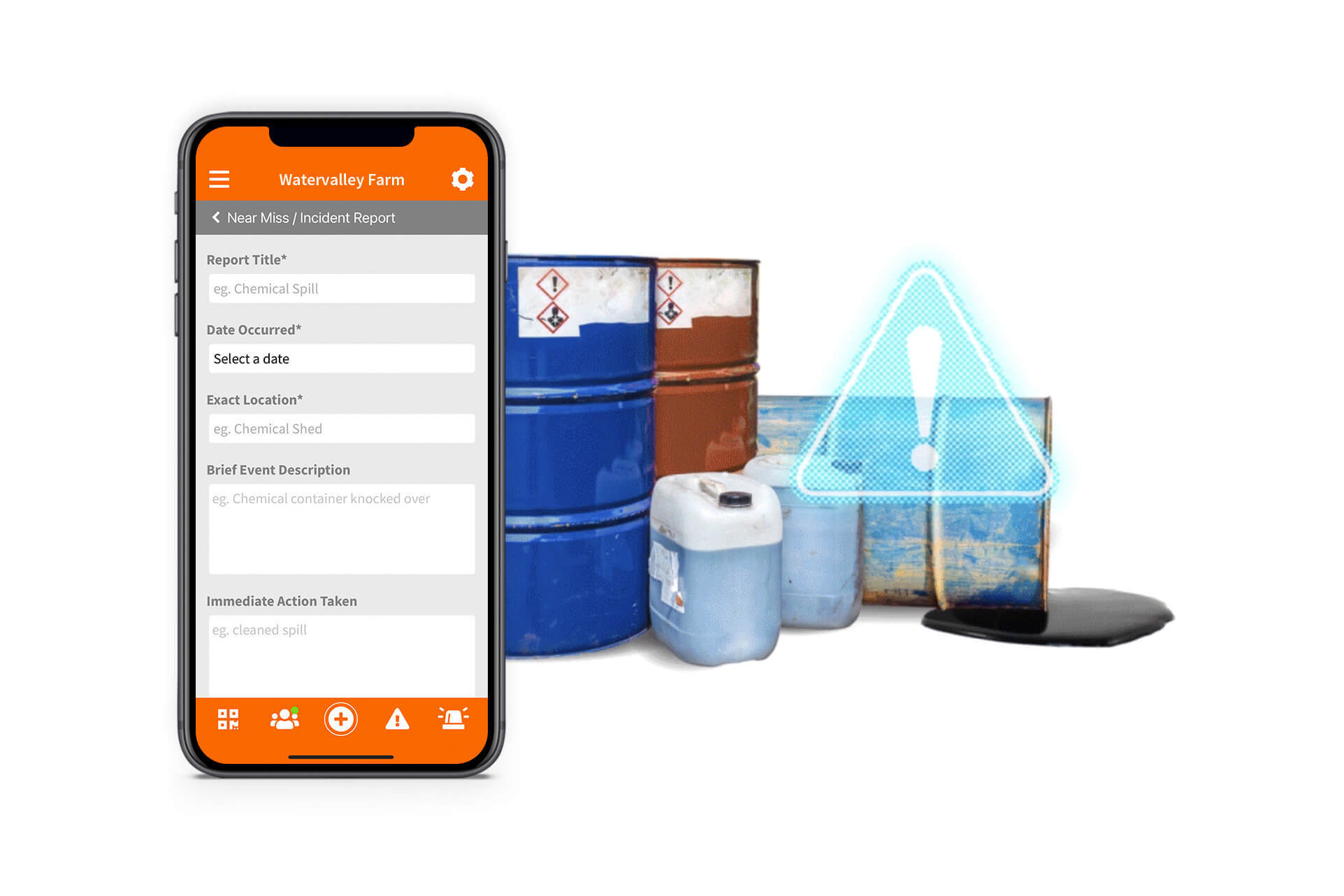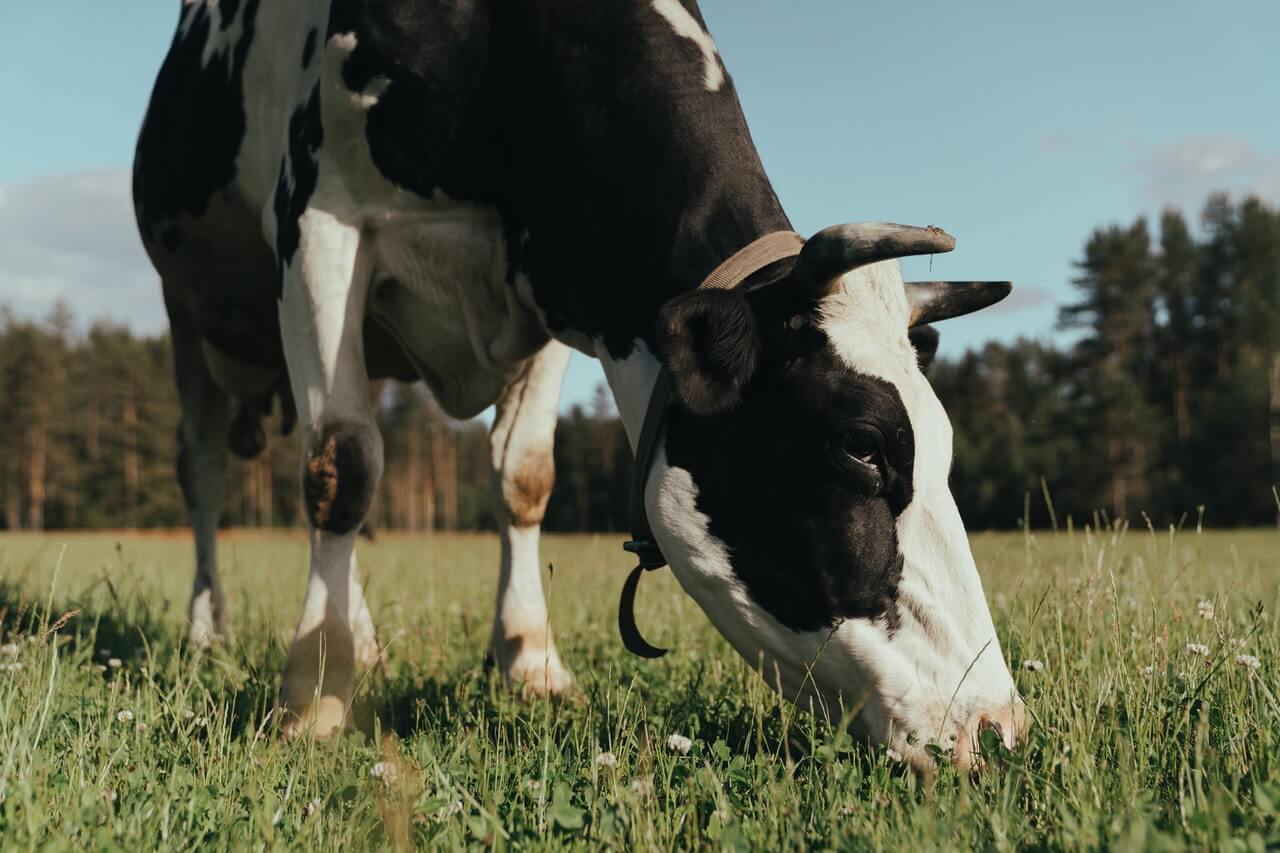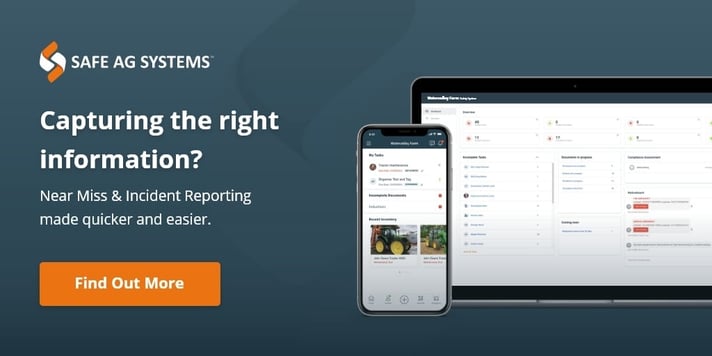We have previously discussed what research tells us are the top hazards in the dairy industry. In this article we wanted to look at hazards from a different point of view. As a near miss or incident what role does hazard identification and control play in dairy farming?
The purpose of near miss and incident reporting is to prevent that near miss or incident from reoccurring or resulting in an injury in the future. By promoting a safety culture within your agribusiness that encourages hazard identification and control measures, you reduce the risks and potential for harm. This style of reporting allows an agricultural business to review and amend their health and safety practices, including policies and procedures. Our team have addressed the myth that If your agricultural workers start to record incidents and near misses, that will just open an agribusiness up to fines or expose them to litigation in our near miss or incident previous article.
What does a near miss or incident look like in dairy?
To be able to discuss near miss or incident and what that looks like in the dairy industry we need to know the difference of each term in relation to health and safety. Work related injuries, incidents and even near misses need to be reported so an investigation can take place, in turn resulting in control measures to reduce the risk of the situation reoccurring.
- An Injury is defined as an unexpected event which results in injury or an illness to one of your workers.
- A near miss is described as an unplanned event that did not result in injury, illness or damage, but had the potential to do so.
- An Incident is an unexpected event that may result in property damage but does not cause injury or illness to one of your workers.
An injury in dairy could occur when a dairy worker attempts to herd a cow forward, and instead the cow pushes passed the worker, knocking them to the floor and hitting their head. Whilst a near miss could happen when a farmer is unloading hay, when the load becomes unstable, the straps securing the load on the truck snaps and a bale falls to the ground, missing both the farmer and other workers. If that hay bale was to hit the forklift, shattering the cab glass, but not resulting in injury to the operator, this would be recorded as an incident.
The cost of workers’ compensation
Workers’ compensation laws vary from state to state and country to country; however, in Australia employers are required to take out workers compensation insurance in order to cover themselves and their workers. To read more about workers’ compensation, head to our blog which answers the question can health and safety practices reduce workers’ compensation premiums?
In the absence of any new work-related injuries or illnesses over 2008 to 2018, on average Australia’s economy would have been $28.6 billion larger each year (Chart 3.1). Including future impacts from long term injuries and work-related deaths, this number could be expected to increase to over $29.1 billion.
Hazard identification benefits in dairy
The definition of hazard is something that has the potential to cause harm. There are a number of hazards that are faced daily by workers in the dairy industry. These safety hazards can generally be grouped based on the below categories:
- Biological hazards, such as working with livestock, effluent, milk etc.
- Chemical hazards, including cleaning products, medicines, etc.
- Physical hazards / ergonomic hazards, like protruding bolts or nails on a fence, posture during cups on/cups off etc.
- Electrical hazards, for example overhead powerlines, power supply etc.
- Mental health and wellbeing, which incorporates fatigue, work related stress etc.
How to Identify Hazards and Manage Risks
Identifying hazards is one of the easiest, yet most important ways to keep your workers safe from harm. Hazards are easy to spot if you have a look for what could go wrong. This could be done via an inspection, from someone seeing something and raising it as a problem, or through incidents or near misses occurring.
Through having an effective and efficient near miss and incident reporting structure, you are not only staying on top of your WHS responsibilities, but you are also protecting your workers’ right to a safe working environment. When your workers don’t report a near miss, you miss out on lessons that could have been learnt and an opportunity to improve your health and safety.
When workers are encouraged to incorporate hazard and near miss reporting as part their everyday practice, you gain insight and visibility of things affecting your workplace. Often a hazard could have easily been fixed and an incident or injury avoided.
Example:
Dairy farms are prone to hazards involving electricity. This is often due to the working environment, think moisture and wet conditions, tools and equipment being utilised as well as overhead powerlines and machinery. This hazard could cause structural fires or electrical shock to livestock and humans. When a near miss or incident has been reported, a safety inspection should be prioritised to determine what control measures can be implemented to prevent a recurrence.
Near miss: A worker has found a damaged electrical lead sitting in a pool of water, but no-one has made contact the lead. As an employer on a dairy farm, you are required to eliminate or otherwise manage the risk.
Hazard: A common hazard is the use of extension cords, damaged power leads and power outlets in a wet area which could lead to electrocution or electric shock.
Control: Incorporate the use of lead stands or insulated cable hanger to ensure power cords are kept off the wet floors. Using cable protection ramps and covers where possible. Ensure extension leads and power cords are in good condition – replace any damaged ones.

Your near miss and incident reporting process
Near miss and incident reports should be easy to access and quickly initiated in the field. Your workers should be trained in how to identify and report hazards and risks, and a near miss or incident if it were to occur. Do you have a system in place to quickly alert managers to new hazards? Are you concerned key details may be missed or you are unsure what information needs to be captured?
Safe Ag Systems offers a near miss and incident reporting feature that simplifies the process with the mobile app. Don’t rely on paperwork that could go missing or could be hard to locate, wasting time. Allow your workers to initiate a near miss and incident report on site. The feature steps your worker through recording essential information such as date and location as well as photos and witnesses. It then leads on to you classifying the severity of the situation, did police attend or was an ambulance required? Finalising with details of the injuries if applicable, evidence and actions taken. Access the right information to drive continuous improvements for your dairy farm.
Topics: Health and Safety in Dairy Farming
Disclaimer: Content on this website may be of relevance to users outside of Australia, but content links and examples are specific to Australia. Please check with your local authority for your country and industry requirements.












